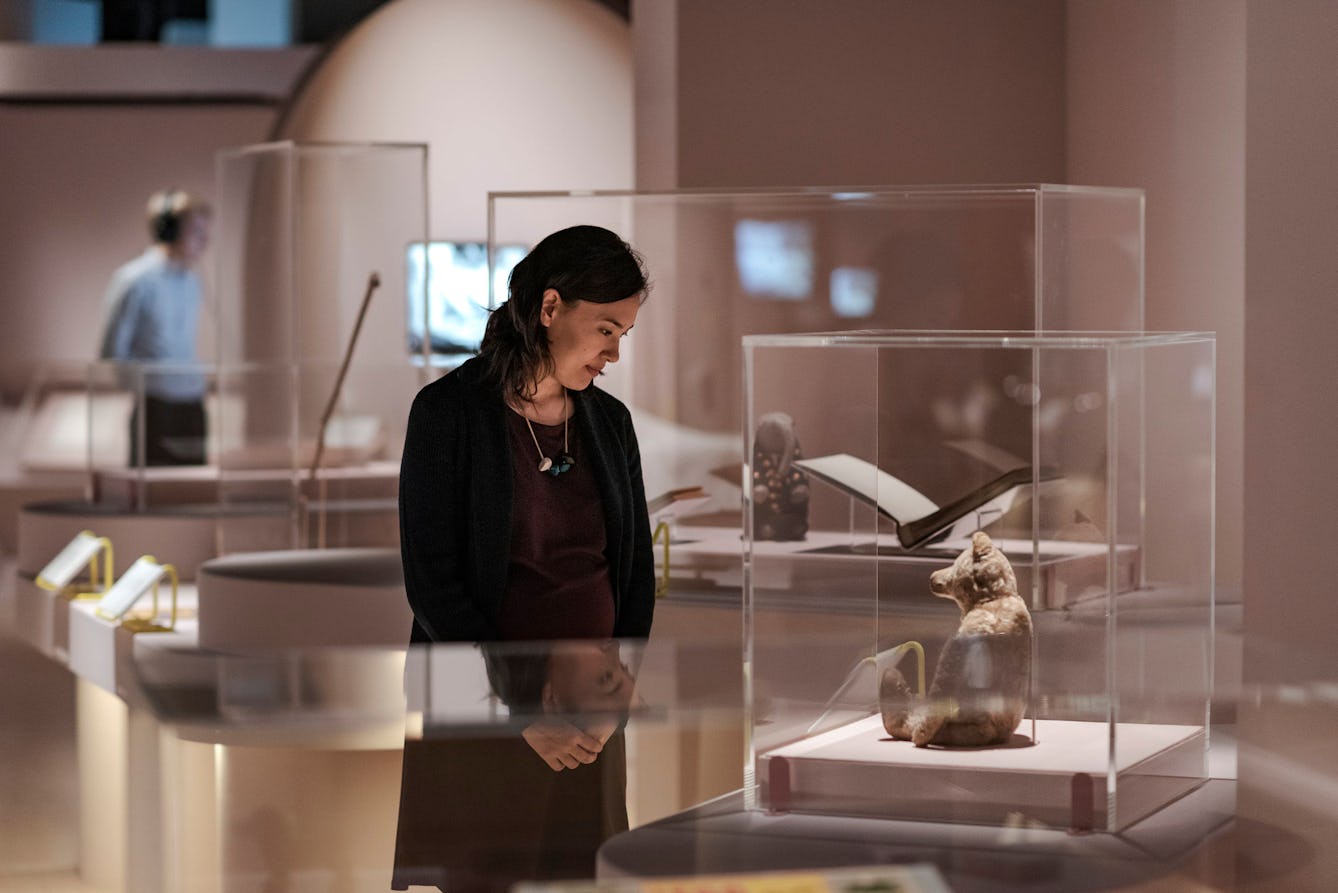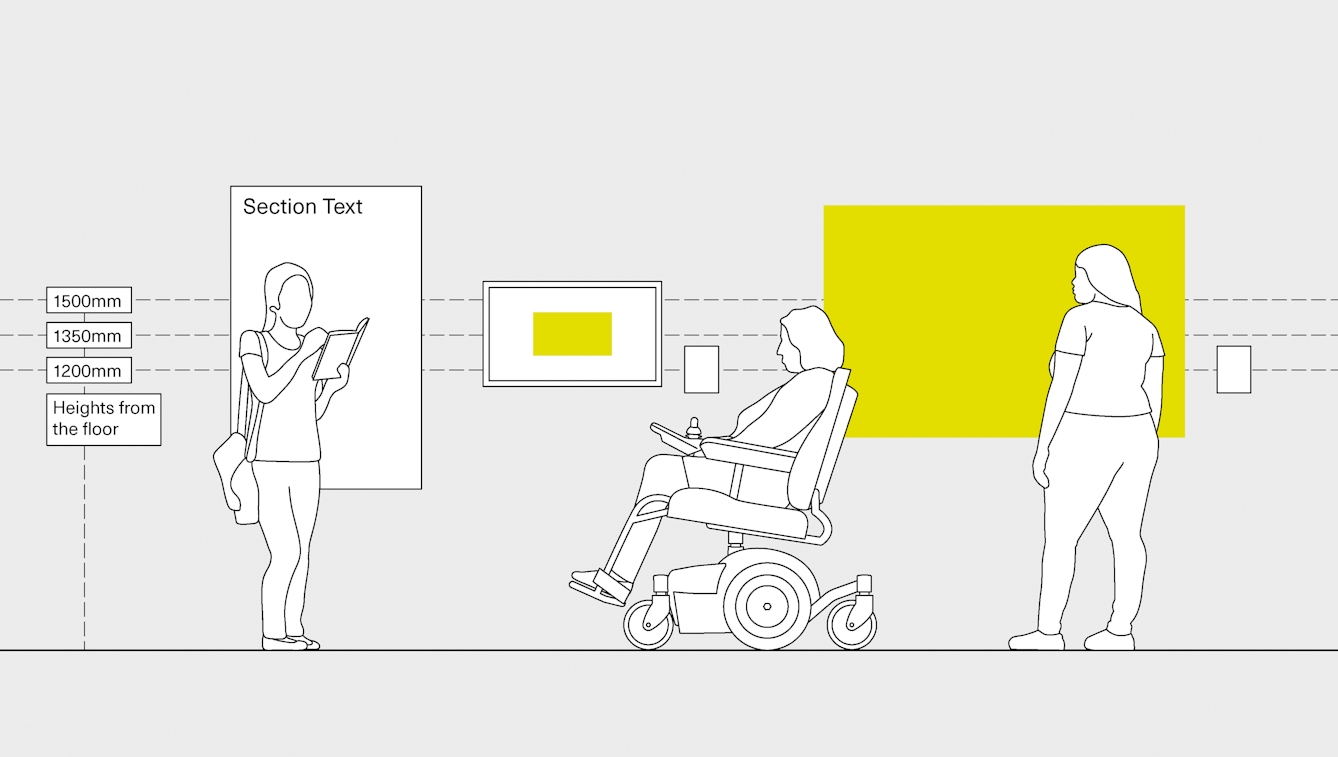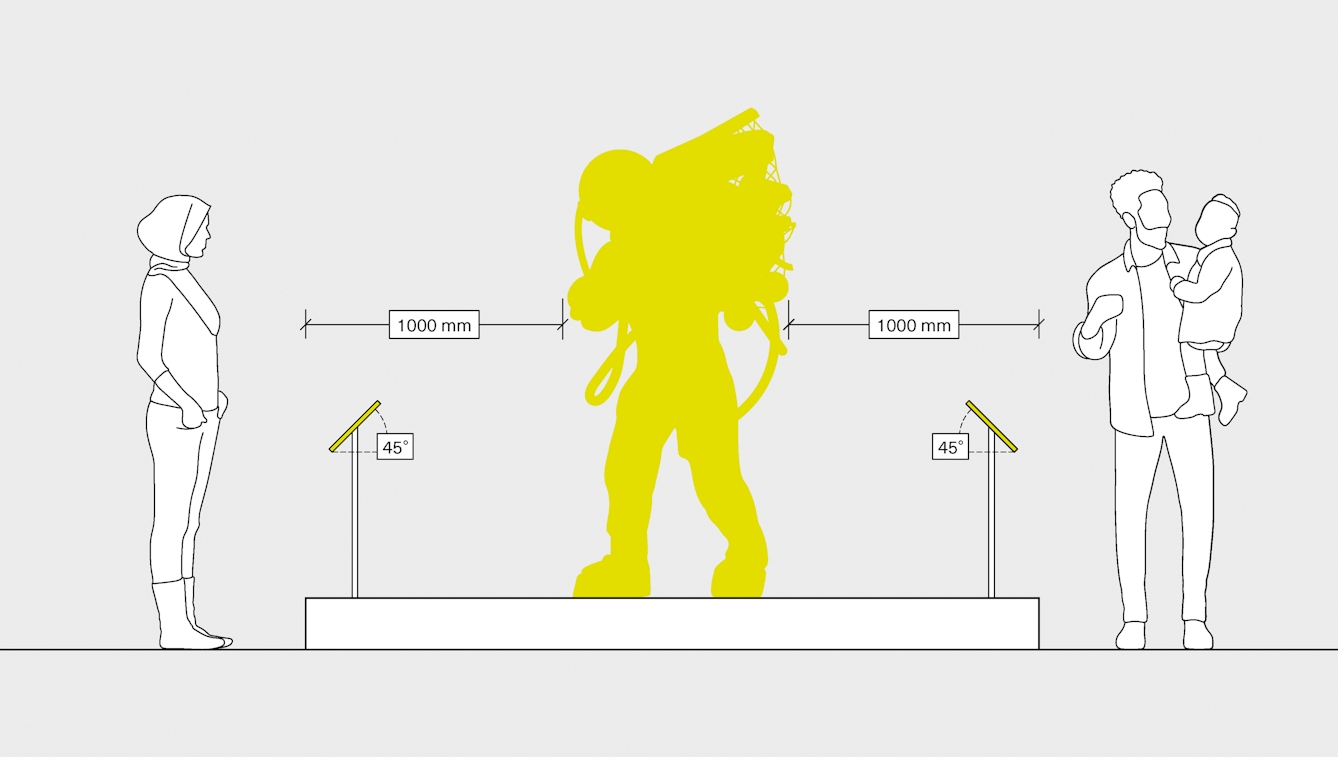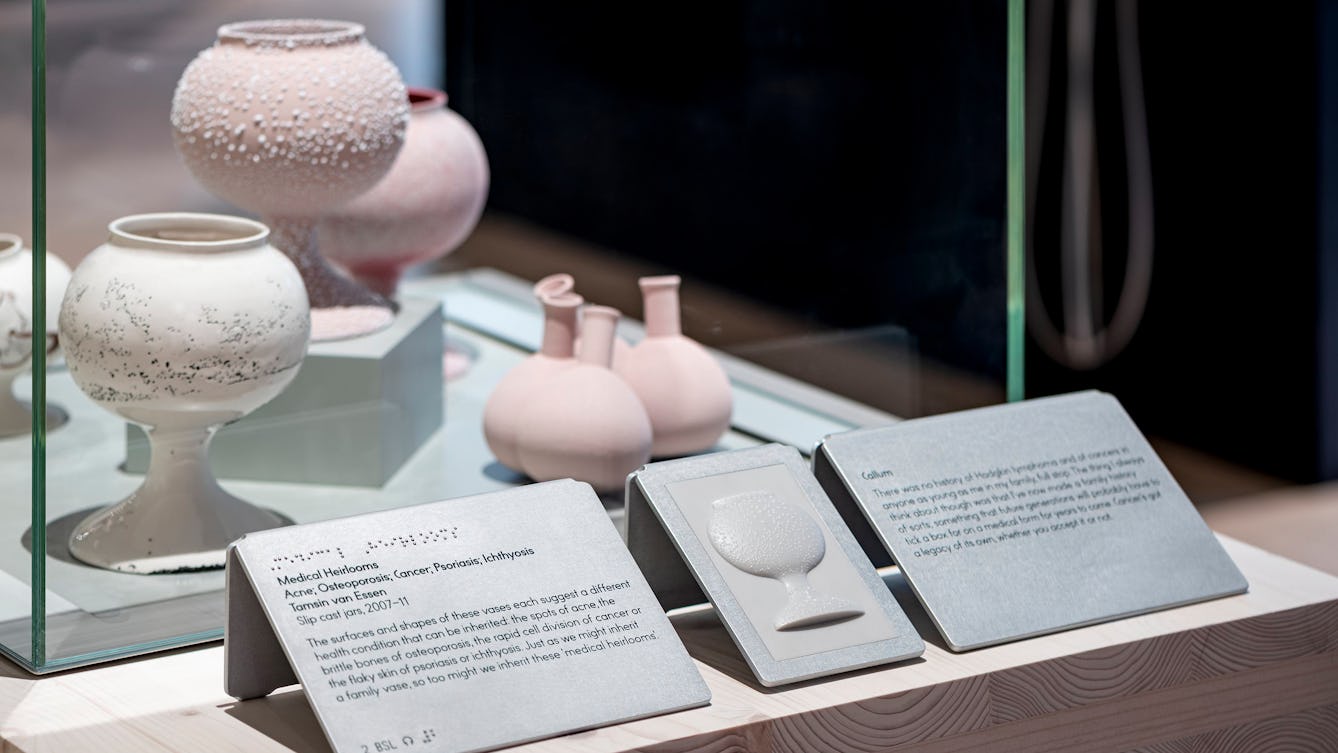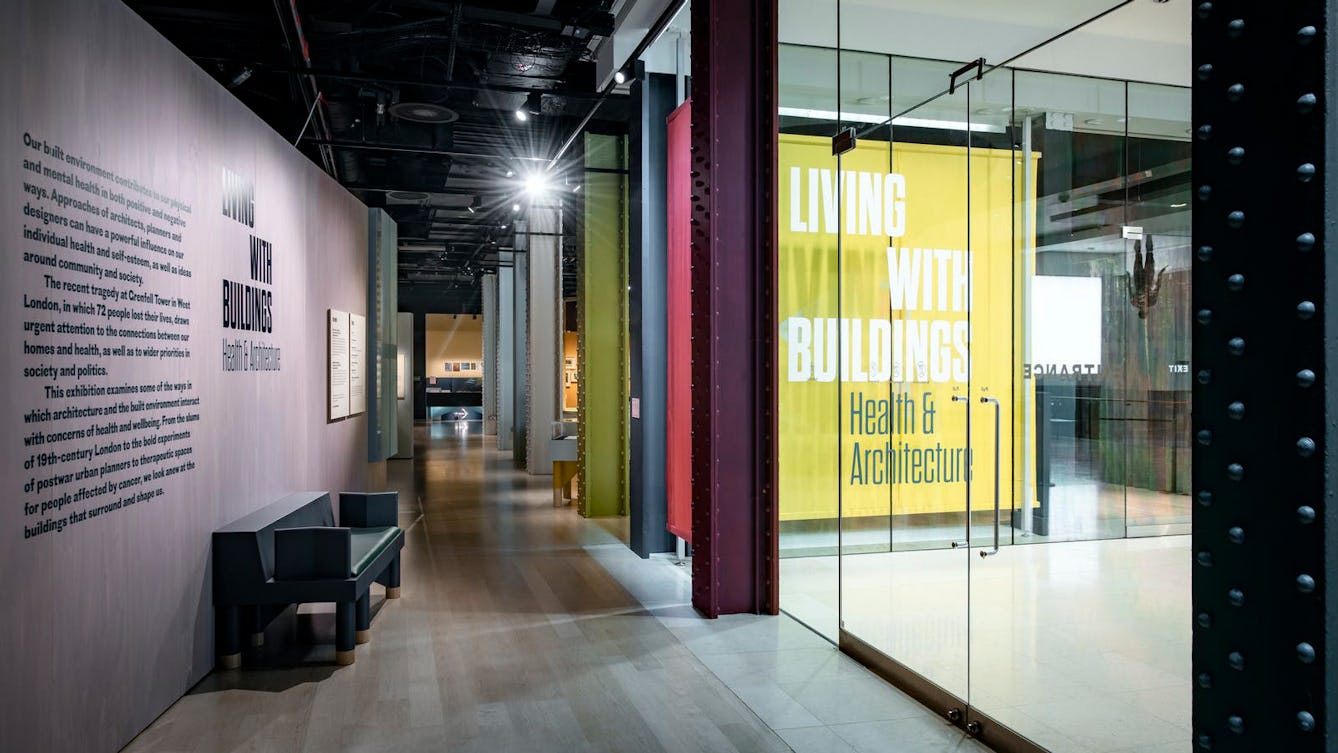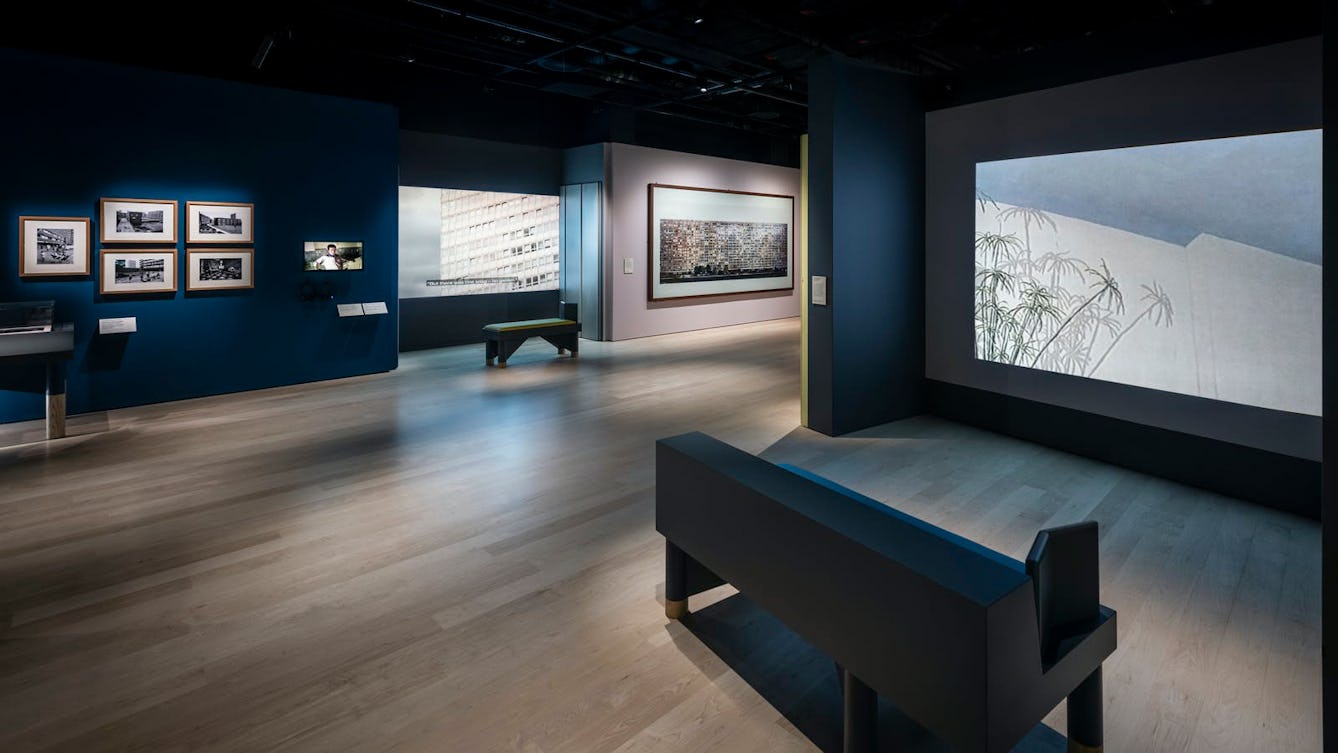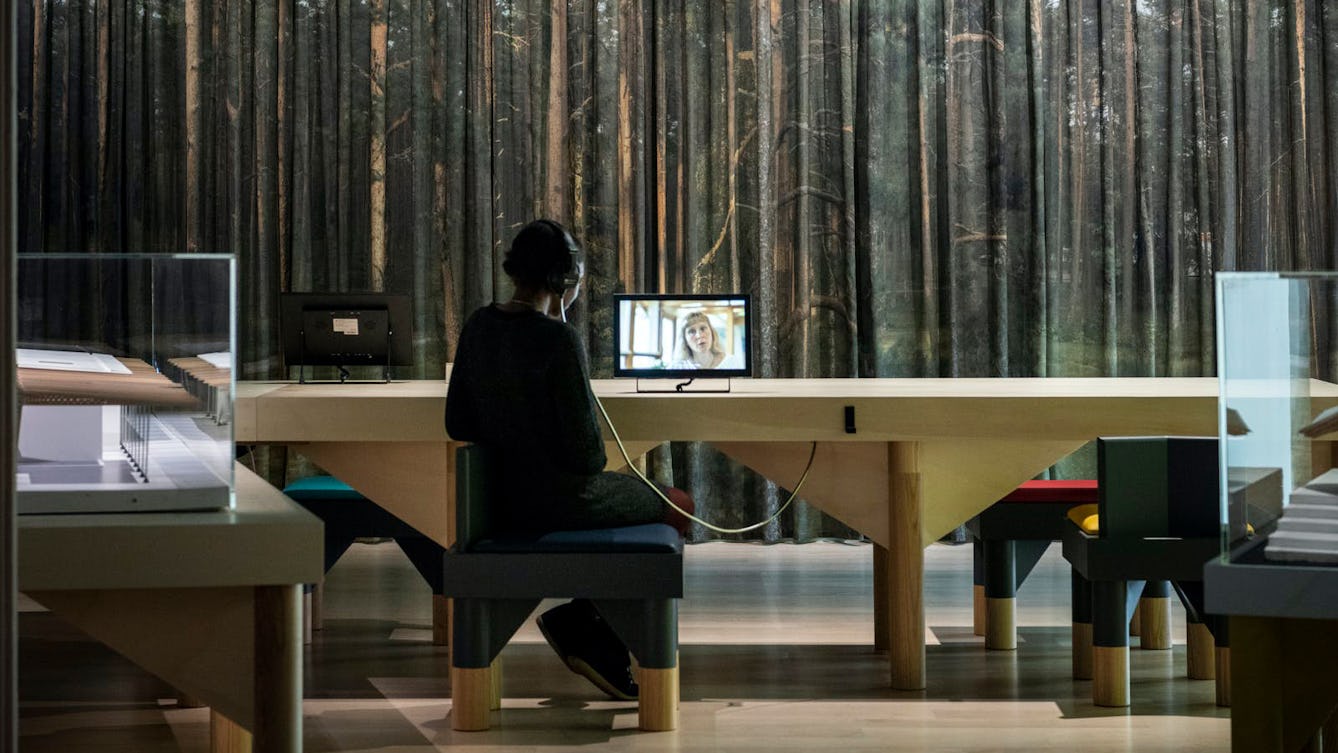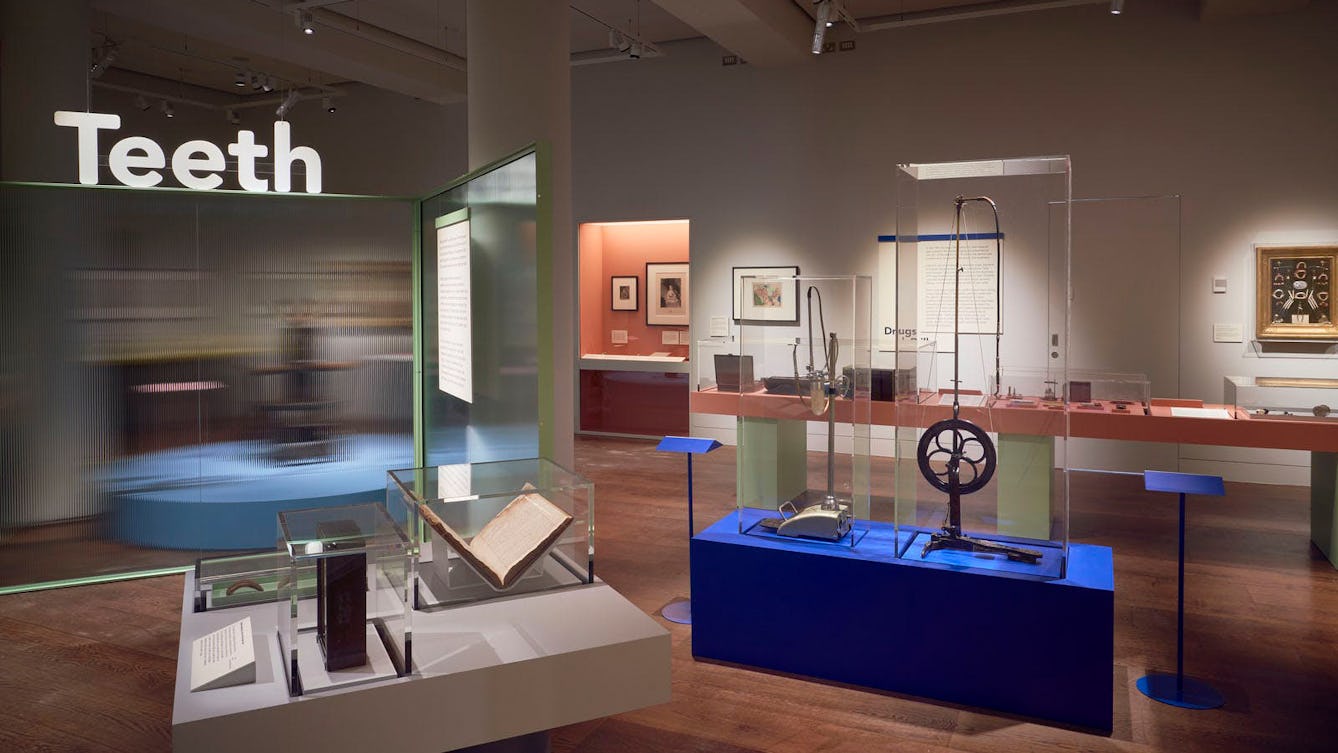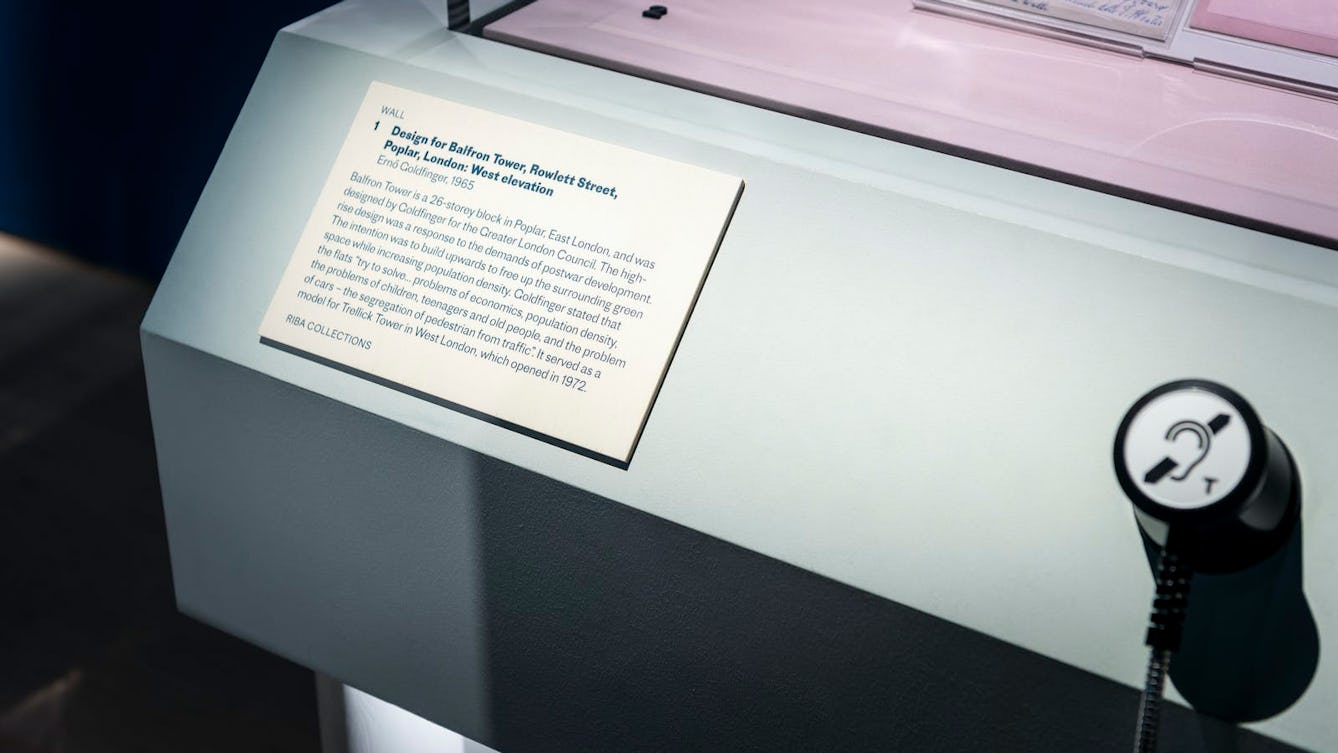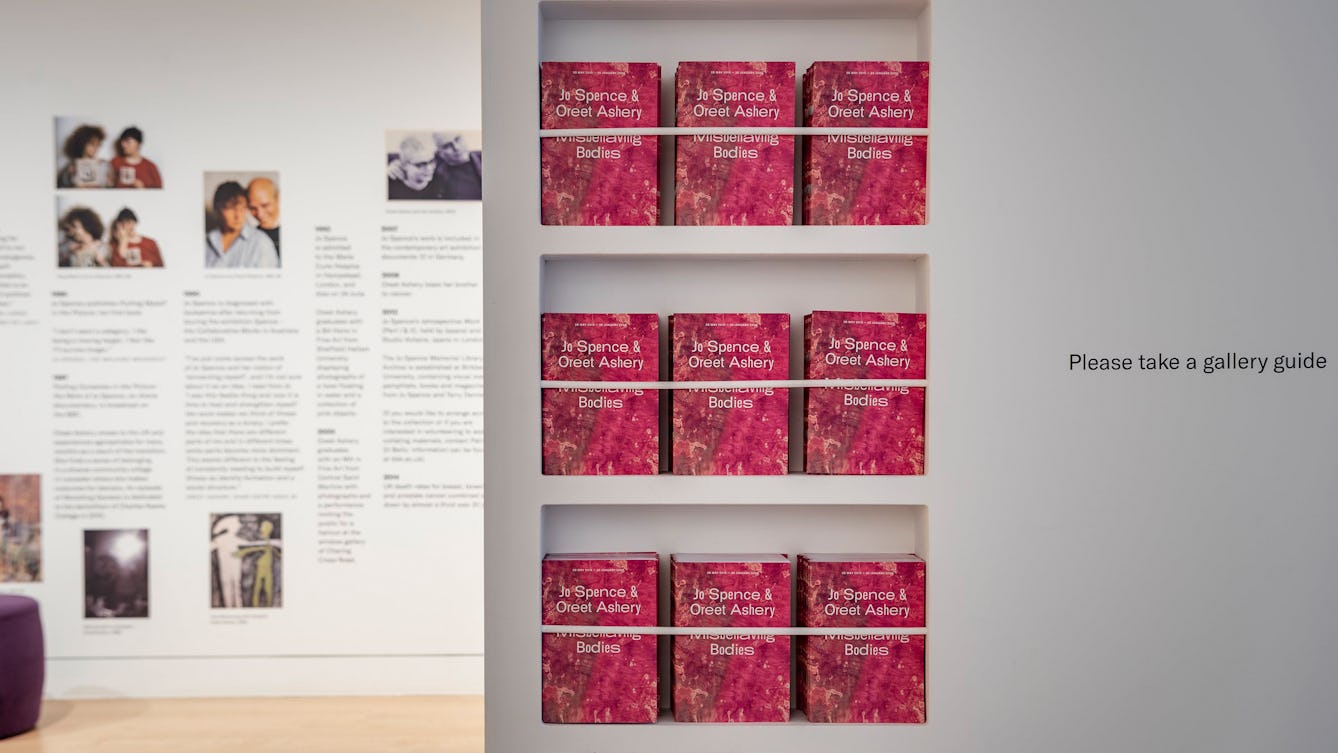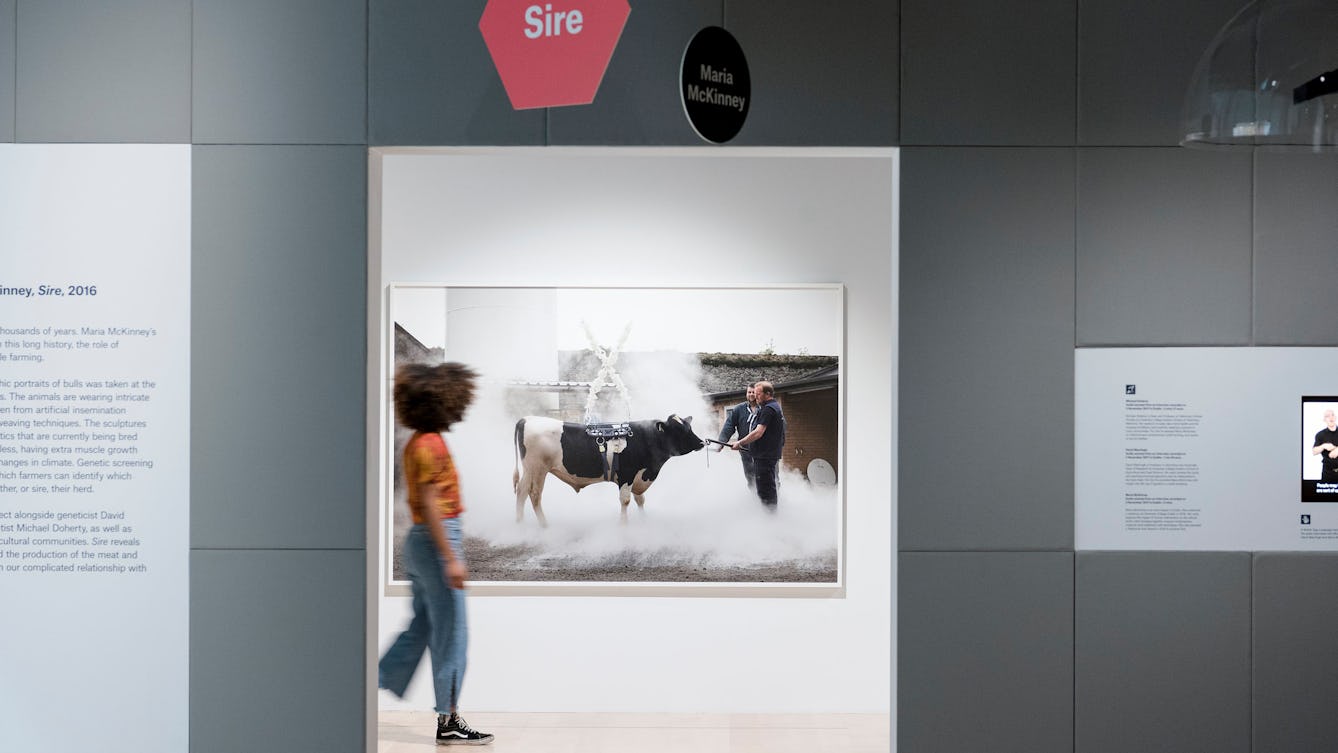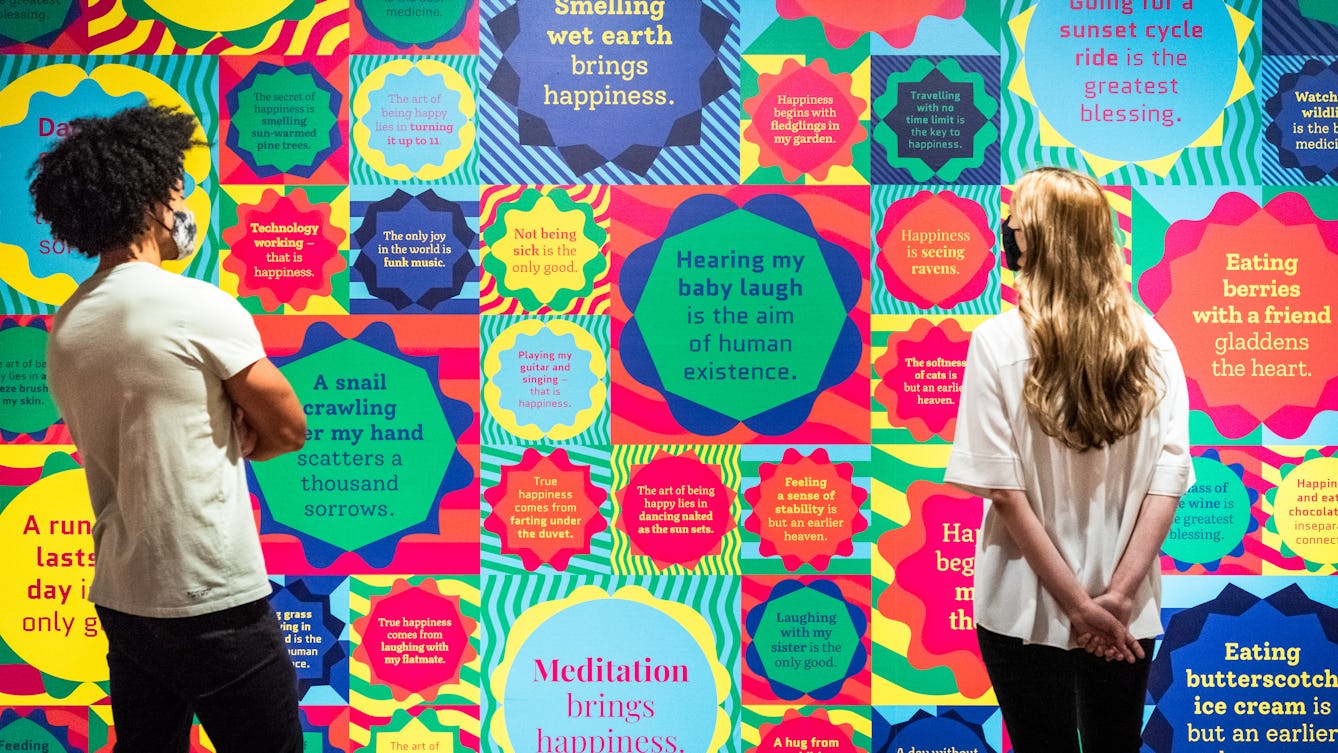Principles of object display
We aim to create beautiful designs that balance the needs of our visitors, the conservation and interpretative needs of the object, and the curator’s or artist’s intent.
When deciding the method of display for an object, it is the collective responsibility of the project team to consider the following:
- What is the size of the object? Does it have detail that requires close viewing?
- If the object were encountered in everyday life, how would it be approached or seen?
- Does it need a 360-degree viewpoint?
- Is it clustered with other objects? Is there appropriate space between objects in a shared case or cluster?
- Is it easy to associate an object with its label?
- Is there a consistent relationship between objects and their labels?
- Are 3D design, 2D design and lighting design working together? Can we avoid heavy shadows on objects?
- Are there installation or conservation requirements to be taken into account as part of the display? Does it need to be displayed flat? Does it need to be displayed on a book cradle? Does it require low lighting? Are there ways of mitigating the impact of these requirements?
